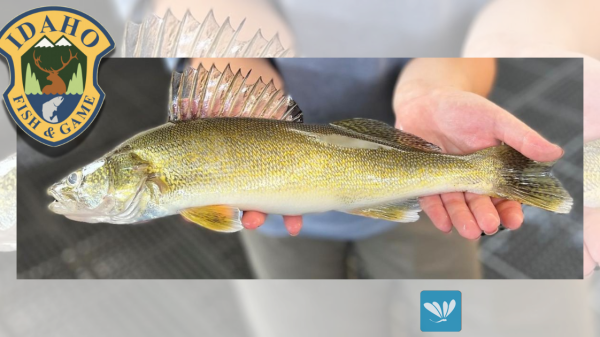LEWISTON — In cooperation with the Army Corp of Engineers and Idaho Department of Environmental Quality (DEQ), Public Health – Idaho North Central District is issuing a health advisory due to the presence of cyanobacteria, also known as a harmful algal bloom (HAB) at the extreme upper end of Dworshak Reservoir, upstream of the Grandad boat launch at Reservoir Mile 46 on the North Fork of the Clearwater River located in Clearwater County. Recent samples taken indicate present concentrations of toxin-producing cyanobacteria that may cause illness to humans and animals. The public is urged to use caution when recreating in or near the water, especially when ingestion is at risk.
Cyanobacteria occur naturally in Idaho’s water bodies. When temperatures rise, their populations can bloom and release cyanotoxins, toxic chemical compounds, into the water that are harmful to people, pets, and livestock. The blooms are generally green, or blue-green, and may form thick mats along shorelines. These may look like surface scum, resembling pea soup and can have an unpleasant odor or stench. Pets, children, the elderly, and people with compromised immune systems are most at-risk of harmful exposure.
Public Health – Idaho North Central District, the Army Corp of Engineers, and DEQ advise the following precautions to be taken where harmful algal blooms are known to be present:
• Humans, pets, and livestock should not drink the affected water.
• Humans and animals should stay out of the affected water. Swimming, wading, or other activities with full body contact of water should be avoided.
• Fish should be cleaned and rinsed with clean water. Only the fillet portion should be consumed. All other parts should be discarded.
• Pets and livestock are vulnerable to cyanobacteria and their toxins and should stay out of the water where blooms are visible. Pets and livestock can be exposed to cyanobacteria and their toxins through drinking, swimming, or self-grooming by licking their wet coat or paws. A reaction will likely require immediate veterinary attention. • Do not allow pets to eat dried algae.
• If affected water contacts skin or pet fur, wash with clean potable water as soon as possible. • Areas of visible algae accumulation should be avoided.
Samples taken indicate the presence of toxin-producing cyanobacteria cells, so everyone should heed these precautions and avoid contact with the water in the impacted area. Caution should be taken anywhere the water appears discolored or murky as HABs can spread and move with wind and water currents. HABs have the potential to produce dangerous toxins especially when accumulated in high concentrations.
Symptoms of Exposure
People who are exposed to water with high concentrations of cyanobacteria or cyanotoxins may experience nausea, vomiting, diarrhea, difficulty breathing, coughing and/or wheezing, skin irritation, allergic responses, rashes, liver damage, or neurotoxic reactions such as tingling fingers and toes. Anyone with symptoms should seek medical attention. Boiling or filtering the water will not remove cyanotoxins.
For more information about harmful algal blooms, including a map of advisories currently in effect throughout Idaho, visit DEQ’s website at https://www.deq.idaho.gov/water-quality/surface-water/cyanobacteria-harmful-algal-blooms/
















